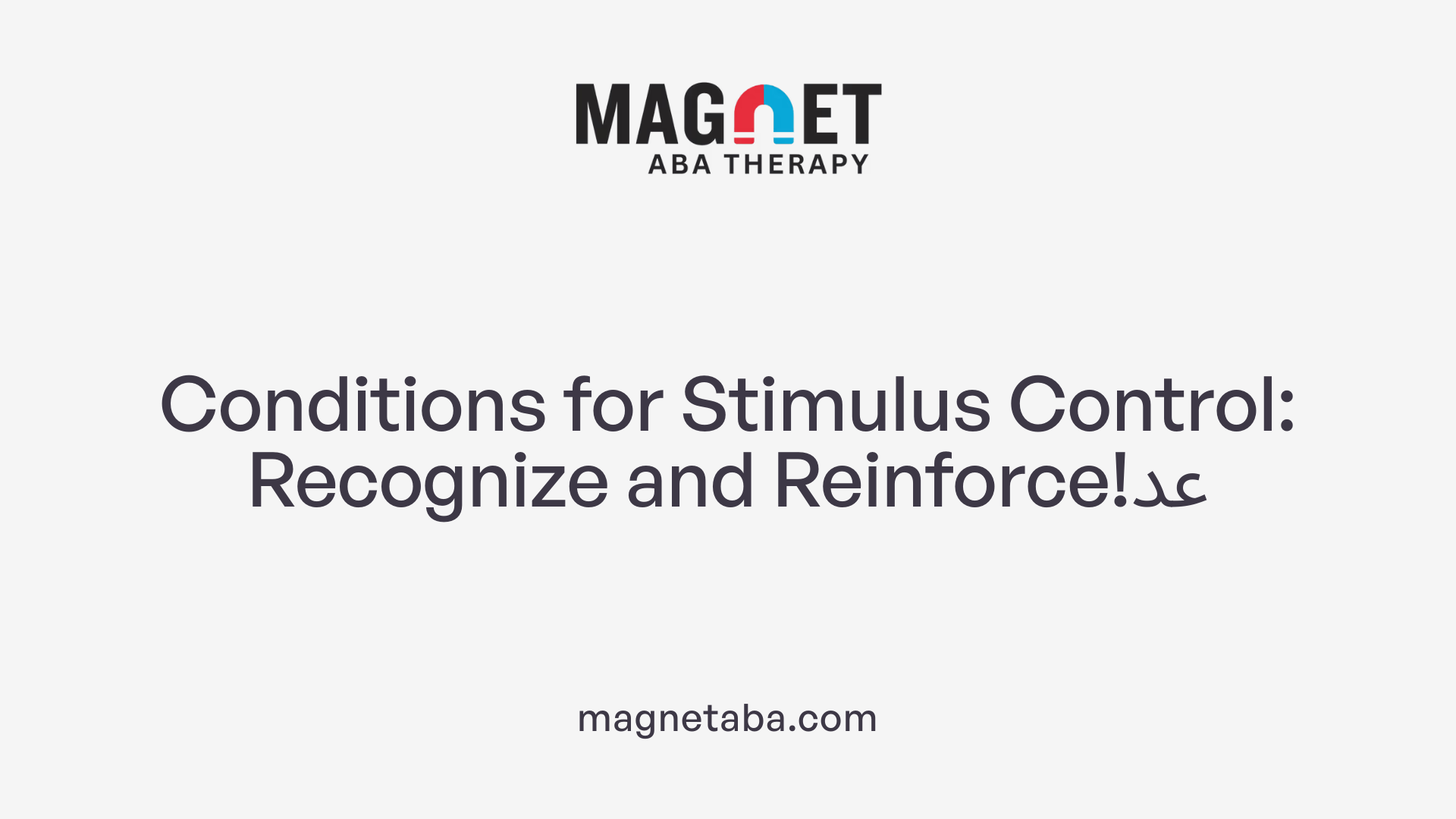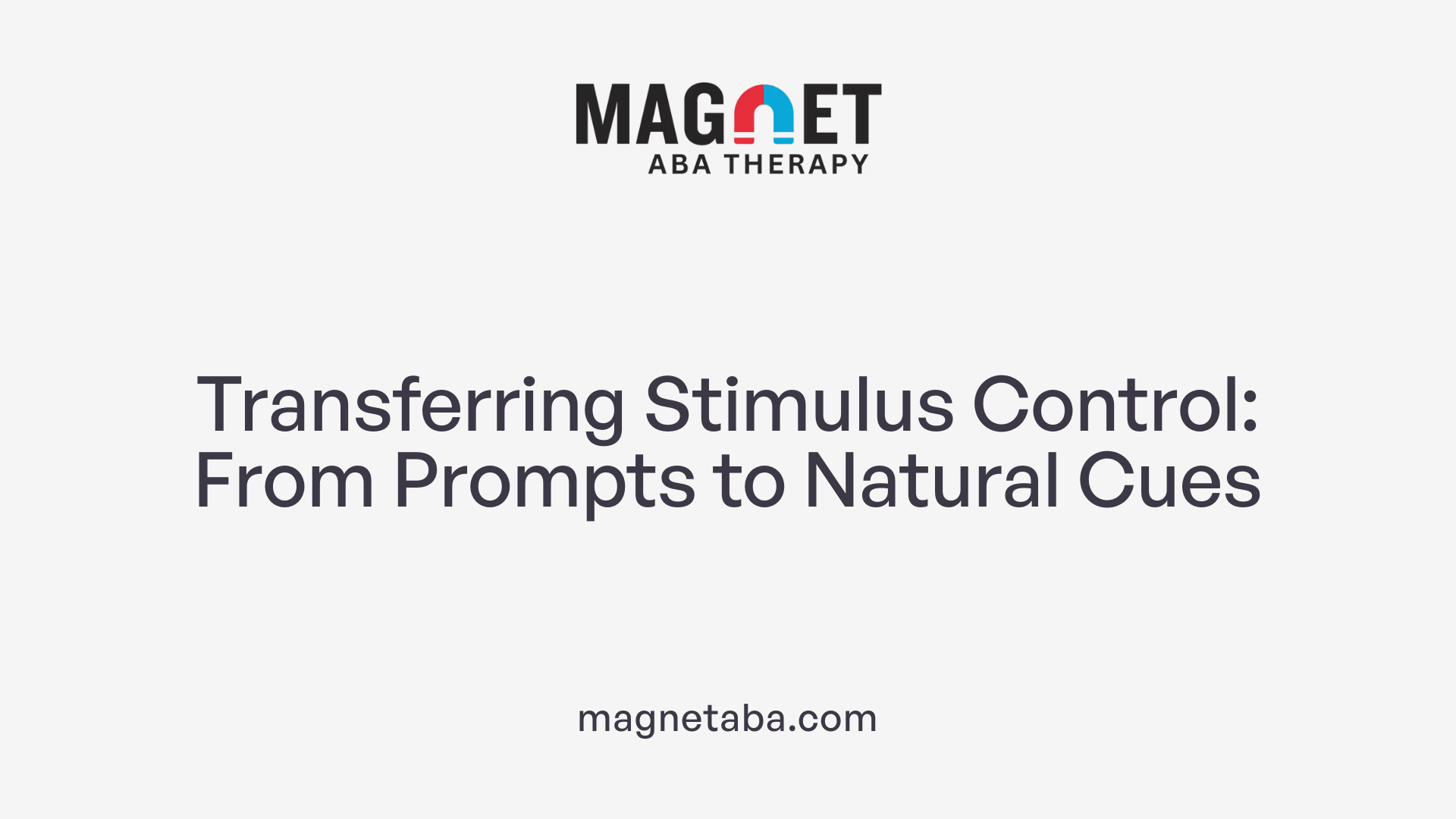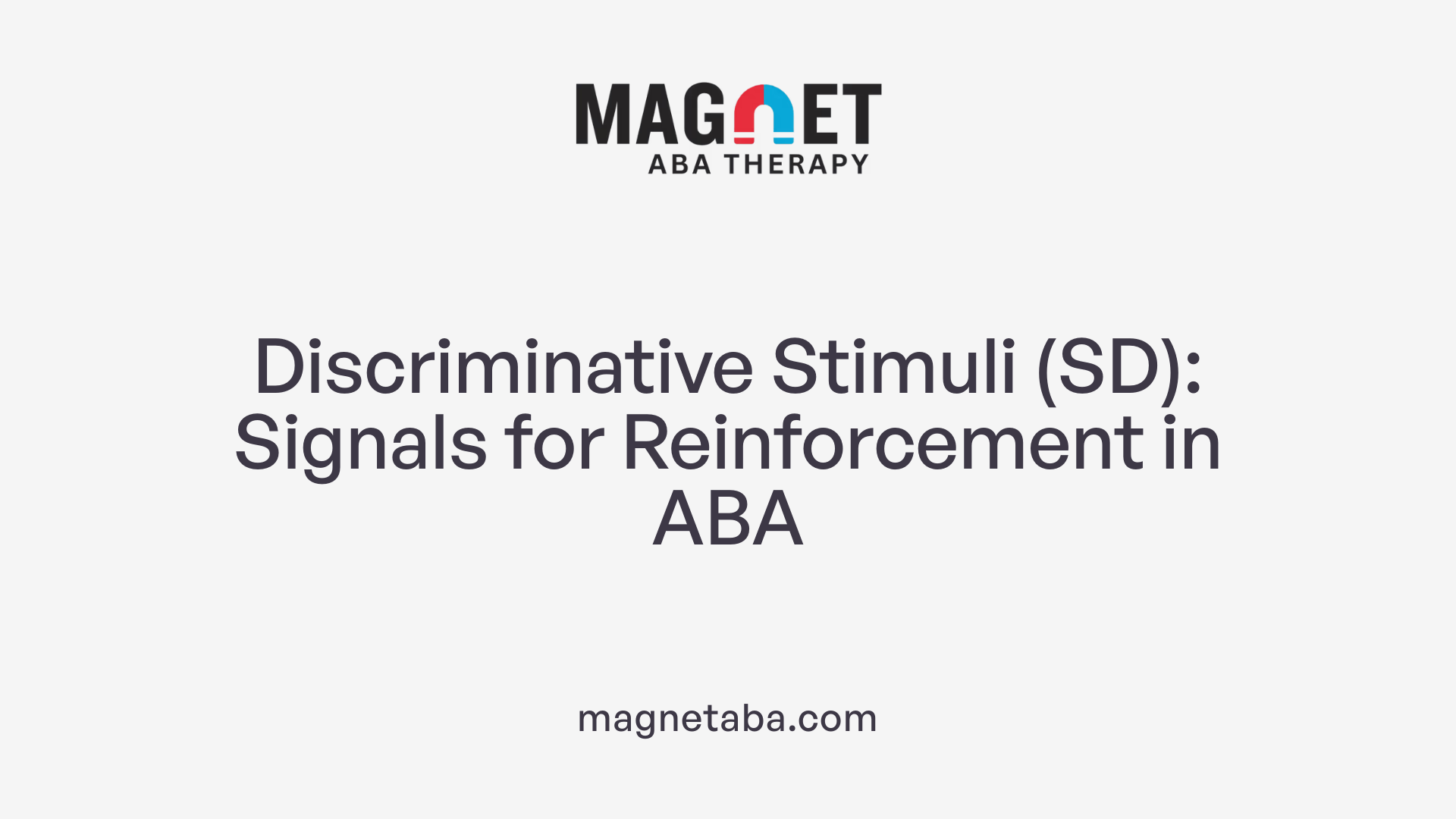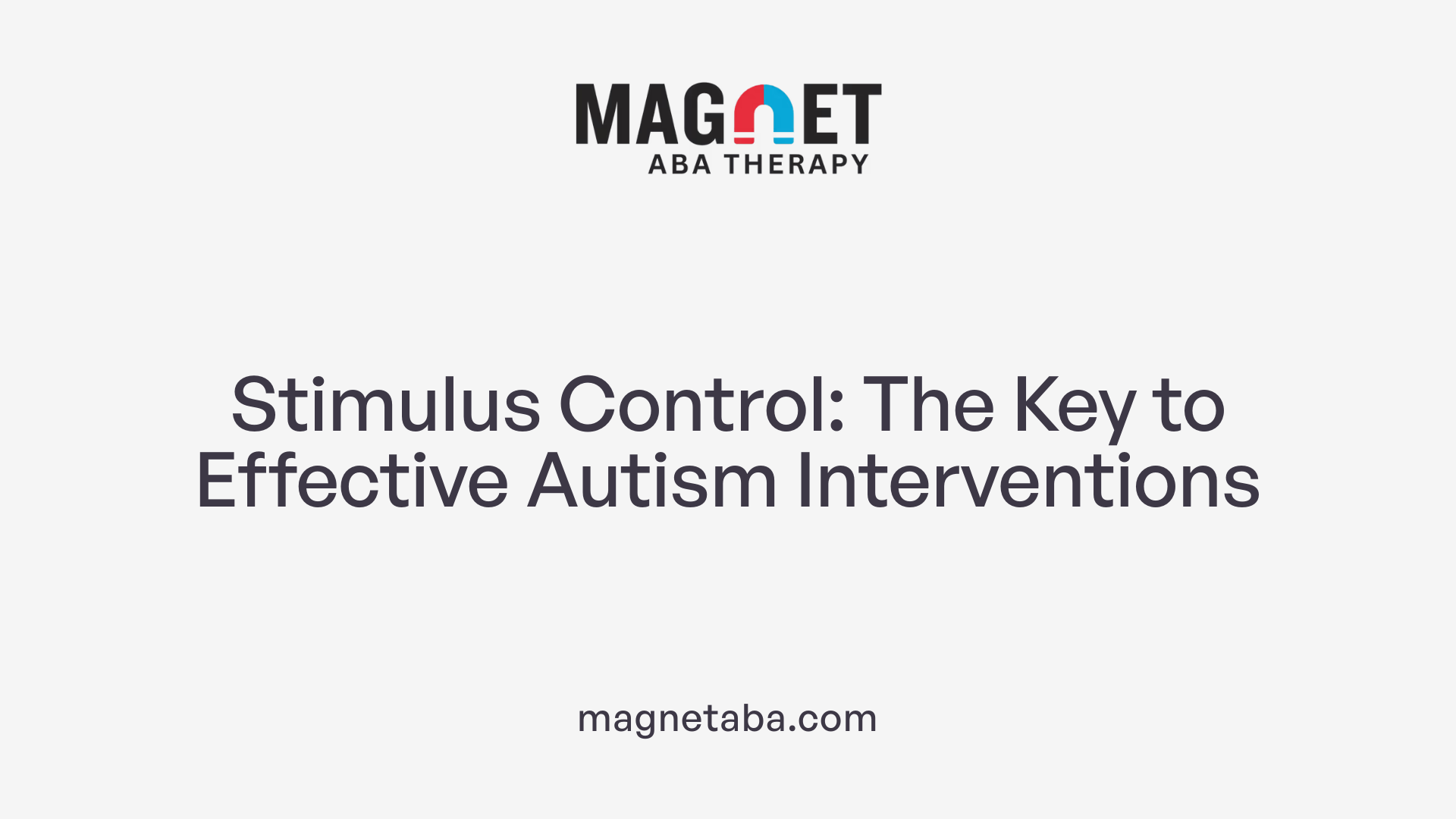Unveiling the Power of Stimuli in Behavior Modification
Stimulus control is a foundational concept in applied behavior analysis (ABA) that explains how specific environmental stimuli influence behavior. Recognizing and manipulating these stimuli can lead to meaningful behavior change, especially in populations such as children with autism. This article explores the intricacies of stimulus control, elucidates how it functions within therapy, and highlights its critical role in fostering independence and adaptive skills.
Defining Stimulus Control in ABA

What is stimulus control in ABA and how is it applied in therapy?
Stimulus control is a foundational concept in Applied Behavior Analysis (ABA). It describes how a behavior is more likely to occur in the presence of certain specific environmental cues or stimuli.
In simple terms, stimulus control means that responses happen more often when particular signals are present. For example, a child might only say "hello" when prompted by a visual cue or a verbal phrase, showing that their greeting behavior is under the influence of a stimulus.
In therapy settings, establishing stimulus control involves teaching individuals to differentiate between relevant and irrelevant stimuli. Clinicians use techniques such as discrimination training to help clients respond correctly only in the presence of certain cues, which signals when a behavior will be reinforced.
An important aspect of advancing behavior skills is transferring stimulus control from artificial prompts (like hand signals or verbal cues) to natural environmental stimuli. This process, called stimulus control transfer, ensures that learned behaviors are meaningful and can be performed reliably in everyday life.
Methods such as prompt fading—gradually reducing prompts, delay strategies, and stimulus fading—are used to help shift control from artificial cues to natural stimuli. For instance, a child might initially only ask for a toy when a picture of it is shown (prompt), but over time, they learn to ask for the toy based on the actual sight of the toy in different settings.
Effective stimulus control promotes independence, skill generalization, and better real-world functioning. Behaviors are more likely to be performed spontaneously and appropriately when they are under the control of natural cues, making ABA interventions more sustainable and impactful.
Practical Examples and Everyday Implications
What are some examples of stimulus control in behavior analysis and ABA therapy?
Stimulus control occurs when a specific stimulus influences how often or how intensely a behavior occurs. In behavior analysis and ABA therapy, these examples help illustrate how environmental cues can shape actions.
One common instance is a child responding to the verbal prompt "sit down" and then independently sitting in a chair once the prompt is faded. This shows that the behavior has come under the control of the chair as a stimulus.
Another example is a driver stopping at a red traffic light. Here, the red light acts as a stimulus that controls the stopping behavior. When the light turns green, the driver is likely to proceed, demonstrating that the presence of the red light suppresses the action of moving.
In a classroom setting, a student might behave differently in the presence of a teacher compared to when they are with peers. This illustrates stimulus discrimination, where different stimuli lead to different responses.
Environmental cues like a school bell signal transition times, automatically prompting students to change activities. Similarly, the smell of food can trigger hunger, influencing eating behavior.
In therapy, professionals use techniques such as stimulus fading, where a stimulus is gradually altered to promote generalization of a skill. Stimulus discrimination training helps individuals respond correctly to relevant stimuli while ignoring irrelevant ones.
These examples underscore how stimuli in our environment act as control signals for behavior, and understanding this influence is crucial in designing effective intervention strategies.
Establishing and Recognizing Conditions for Stimulus Control

What are the conditions necessary for a behavior to be under stimulus control?
Stimulus control is established when a behavior consistently occurs in the presence of a specific environmental cue, known as the discriminative stimulus (SD), and is not exhibited when that stimulus is absent. For a behavior to be genuinely under stimulus control, it must be reliably triggered immediately upon detection of the SD and not be prompted by irrelevant stimuli. This means responses should increase when the SD is present and decrease or cease in its absence.
In behavior-analytic practice, discrimination training is used to reinforce responses to the SD while withholding reinforcement when other stimuli, known as S-Delta, are present. This process helps the individual differentiate between stimuli and respond appropriately. For example, a child learning to identify the color green might only receive praise when selecting the correct object after being taught that reinforcement is only given for green items.
Several factors influence stimulus control development. Stimulus salience, which refers to how much a stimulus stands out, plays a role in attracting attention and aiding learning. Stimulus disparity, or the physical differences between stimuli, can also impact discrimination skills. Effective prompting techniques, coupled with systematic fading procedures like most-to-least prompts or prompt delay, facilitate the transfer of control from prompts to natural cues.
However, stimuli may sometimes exert faulty control, where irrelevant cues inadvertently influence behavior. For instance, using layout cues or pictures instead of actual text can result in responses driven by perceptual aspects irrelevant to the task. Phenomena such as stimulus generalization, where responses to stimuli similar to the original SD occur, and the peak shift effect, where the response shifts away from the original target stimulus, can affect stimulus control efficacy.
In summary, the conditions for establishing stimulus control revolve around consistent, immediate, and appropriate responses to specific stimuli reinforced over time, with careful manipulation of stimuli and reinforcement contingencies ensuring that behaviors are reliably triggered by the intended environmental cues.
The Process and Techniques of Stimulus Control Transfer
 Stimulus control transfer is a fundamental process in applied behavior analysis (ABA), designed to help individuals respond more naturally and independently across different environments. It involves shifting control of a behavior from artificial prompts or cues to natural stimuli that are present in everyday settings.
Stimulus control transfer is a fundamental process in applied behavior analysis (ABA), designed to help individuals respond more naturally and independently across different environments. It involves shifting control of a behavior from artificial prompts or cues to natural stimuli that are present in everyday settings.
One of the main techniques used in this transfer is prompt fading. This method gradually reduces prompts such as verbal cues, physical guidance, or visual aids, to encourage the individual to perform the desired behavior in response to natural stimuli. For example, a child initially prompted to ask for a drink using picture cards may gradually be taught to do so without the pictures, relying instead on natural cues like seeing a cup.
Stimulus fading is another important method, where the prominence or intensity of a stimulus is gradually decreased to promote generalization. For instance, a teaching program might start with highly salient (noticeable) cues, then slowly reduce their salience, so the individual learns to respond to stimuli that are less conspicuous but more natural.
Transfer of control from prompts to natural stimuli involves steps like discrimination training, where learners are taught to differentiate between different cues and respond appropriately. Over time, prompts are systematically faded through specific procedures such as most-to-least prompting, least-to-most prompting, and prompt delay.
Prompt delay, for example, involves waiting a predetermined amount of time before giving a prompt, offering the individual the chance to respond independently. This helps strengthen the response to the natural cue.
Successful stimulus control transfer ensures that behaviors are triggered by relevant environmental cues instead of artificial prompts. This improves the learner’s ability to generalize skills across settings and situations, promoting greater independence.
Understanding and implementing these techniques effectively can significantly enhance the outcomes of ABA therapy, making behaviors more functional and naturally triggered in real-life contexts.
More Information: Searching for "stimulus control transfer techniques in ABA" provides insights into various procedural strategies used to facilitate this transition, including errorless learning, systematic prompt fading, and natural cue utilization.
The Role of Discriminative Stimuli (

What is discriminative stimulus in ABA?
In Applied Behavior Analysis (ABA), a discriminative stimulus (SD) is an environmental cue that signals the availability of reinforcement for a specific behavior. When the SD is present, it indicates to the individual that performing a certain action will likely lead to a positive consequence or reinforcement. For example, seeing a traffic officer's hand signal acts as an SD for drivers to stop.
Discrimination training involves teaching individuals to differentiate between these stimuli and respond accordingly. This training helps individuals learn to produce desired behaviors in the presence of the SD and suppress them when the S-delta (SΔ) signals that reinforcement is not available.
In practice, the SD guides behaviors by telling learners when a response will be reinforced, encouraging consistent and appropriate reactions. Conversely, the SΔ signals that a behavior will not be reinforced, helping minimize undesirable responses. Through repeated discrimination training, individuals develop the ability to respond selectively based on environmental cues, thus promoting adaptive and functional behaviors.
Advanced Concepts: Multiple Stimulus Control and Its Significance
What is multiple stimulus control and how does it affect behavior?
Multiple stimulus control refers to a situation where a single behavior is influenced by more than one environmental stimulus simultaneously. Unlike simple stimulus control, which involves responding to a single cue, multiple stimulus control allows for complex discrimination, enabling individuals to respond differently depending on the combination of stimuli present.
This concept enhances behavioral flexibility, which is the ability to adapt responses based on varying cues in different situations. For example, a person might respond to a green traffic light when it is accompanied by a stop sign or a pedestrian crossing signal. These multiple cues work together to guide appropriate responses.
In applied behavior analysis (ABA), multiple stimulus control is crucial for teaching nuanced skills such as discrimination training, stimulus generalization, and stimulus fading. It supports the transfer of responses from artificial prompts to real-world, natural cues, encouraging independence and functional behavior.
By integrating multiple signals, individuals learn to navigate complex environments more effectively. This leads to more adaptive behaviors that are sensitive to various contextual cues, promoting better social, academic, and life skills overall.
Why Stimulus Control Is Vital in Autism and Behavior Change

Why is stimulus control important in autism treatment and behavior modification?
Stimulus control plays a central role in autism therapy and behavior modification because it helps individuals respond appropriately to various environmental cues. When a behavior is under stimulus control, it tends to occur more often in the presence of specific stimuli, which means responses are more predictable and reliable.
Establishing stimulus control involves discrimination training. This training teaches individuals to distinguish between different stimuli, responding correctly to some and not to others. For example, a child might learn to say "hello" when they see a smiley face but not when they see a frown. Prompt fading techniques, like gradually reducing assistance, help move control from prompts alone to natural cues, fostering independence.
Enhancing stimulus salience and disparity can boost discrimination skills. For instance, increasing the contrast between stimuli or making certain cues more noticeable makes it easier for learners to differentiate and respond appropriately. Techniques like stimulus fading or adjusting stimulus intensity play a role here.
The transfer of stimulus control from artificial prompts to natural stimuli is vital for generalization. When learned behaviors are triggered by real-world context cues rather than artificial prompts, skills become more functional and adaptable. This transfer process also supports maintaining behaviors over time and across situations.
Overall, stimulus control forms the foundation of effective ABA interventions. It ensures that behaviors are not only learned but are also durable and socially meaningful, facilitating genuine progress in individuals with autism and other developmental challenges.
Bringing It All Together: The Power of Stimulus Control in ABA
Mastering stimulus control is fundamental to effective ABA therapy. By systematically teaching individuals to respond to natural cues and signs of reinforcement, therapists can foster greater independence, facilitate skill generalization, and promote meaningful behavior change. The techniques of stimulus fading, prompt delay, and discrimination training are essential tools to achieve this, ensuring behaviors are controlled by relevant environmental stimuli rather than artificial prompts. As a result, individuals are better equipped to navigate real-world situations, making stimulus control a vital component of successful behavior analysis and intervention strategies.
References
- What is Stimulus Control? - Applied Behavior Analysis
- Stimulus Control - Study Notes ABA
- Understanding Stimulus Control Transfer - Apollo Behavior
- Stimulus Control Research and Practice
- Understanding Stimulus Control Transfer In ABA Techniques
- Unlocking Behavioral Cues: A Deep Dive into Stimulus Control and ...
- 6e.B-12: Identify examples of stimulus control
- Stimulus Control Transfer in ABA Therapy: When to Use & Why
- Stimulus Control Transfer in ABA Therapy
- Stimulus Control Research and Practice












